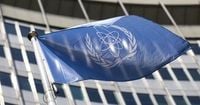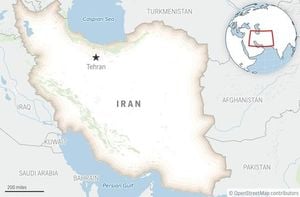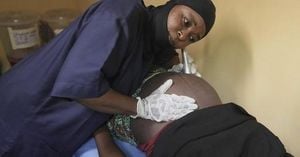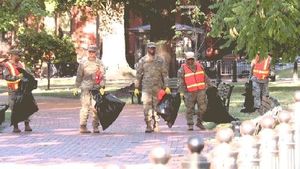In the sweltering late summer of 2025, tensions between Iran and the West have reached a boiling point, with the fate of the country’s nuclear program—and its place in the global order—hanging in the balance. On August 26, European powers France, Britain, and Germany, collectively known as the E3, threatened to trigger the United Nations “snapback” mechanism, a move that would automatically reimpose a sweeping array of sanctions on Iran over its nuclear activities. Tehran’s response? Defiance, threats of withdrawal from key treaties, and a nationwide security clampdown that has left its capital bristling with armed personnel and simmering with anxiety.
According to the Associated Press, the E3’s warning comes after months of frustration over Iran’s “willful and public” departure from the 2015 Joint Comprehensive Plan of Action (JCPOA), the landmark deal that once limited Iran’s uranium enrichment in exchange for economic relief. Under the terms of the JCPOA, Iran was to keep its uranium enrichment below 3.67% purity and its overall stockpile under 300 kilograms. But as of May 2025, the International Atomic Energy Agency (IAEA) reported that Iran had amassed 408.6 kilograms of uranium enriched up to 60% purity—dangerously close to weapons-grade—and a staggering total stockpile of 9,247.6 kilograms. The IAEA’s yardstick suggests that if enriched further to 90%, Iran would possess enough material for nine nuclear weapons, though technical hurdles remain.
The E3’s position is clear: Iran has strayed far beyond the deal’s limits, removed most IAEA monitoring equipment in 2022, and barred some of the agency’s most experienced inspectors in 2023. In July, the Europeans offered Iran a last-minute reprieve—delay the snapback if Tehran would resume negotiations with the United States, allow UN inspectors full access, and account for its highly enriched uranium. Iran rejected the offer, maintaining its nuclear program is peaceful and accusing the West of failing to uphold commitments after the U.S. withdrew from the deal in 2018.
Iranian officials, for their part, have responded with a mix of legal arguments and escalating threats. Ebrahim Azizi, head of the parliamentary security commission, declared, “Europe has no authority to activate the mechanism” and insisted it holds “no legal validity against Iran.” Alireza Salimi, a senior parliamentarian, went further, warning that if Europe proceeds, Tehran might exit the Treaty on the Non-Proliferation of Nuclear Weapons (NPT) altogether. “If snapback is triggered, Iran could leave the NPT,” Salimi said, echoing the regime’s long-standing claim that the West’s actions have absolved Iran of its own obligations.
Behind the scenes, the stakes are even higher. Hassan Beheshtipour, a regime-affiliated analyst, revealed that there is a 90% probability the snapback will be activated, citing discussions inside Iran’s Supreme National Security Council. Control of Iran’s nuclear negotiations has now shifted away from the foreign ministry to senior regime strategist Ali Larijani—a move, according to observers cited by the National Council of Resistance of Iran (NCRI), that signals Tehran is preparing for confrontation, not compromise.
But the drama playing out in Vienna and New York is only part of the story. Inside Iran, the government has responded to both international pressure and growing domestic unrest with an unprecedented security mobilization. Since August 18, the clerical regime has placed its military, police, and paramilitary forces—including the notorious Revolutionary Guard (IRGC) and Basij militia—on full alert. Leave has been canceled for security personnel, and more than 40,000 armed forces have been stationed in Tehran alone. Local sources, as reported by NCRI, confirm that 23,000 IRGC and Basij fighters and 19,000 police officers are now deployed across the capital, manning checkpoints and conducting security drills nightly between 8 p.m. and midnight—prime hours for public gatherings and potential protests.
This massive show of force is not just for foreign eyes. The regime, analysts say, fears its own people more than any external adversary. Regime commanders have begun constructing underground bunkers and escape tunnels in Tehran’s Qasr-e Firouzeh area, and the IRGC has even switched its license plates from military green to civilian white in a bid to blend in—signs of what insiders describe as “deep institutional panic.” Military industries have ramped up weapons and ammunition production, not for an external war, but for a potential internal crackdown.
Fueling the sense of crisis is Iran’s rapidly deteriorating economy. On August 24, the regime-controlled outlet Siasat-e Rooz admitted that the country’s Social Security Organization is on the verge of bankruptcy. The report warned, “When tens of millions lose access to pensions and healthcare, social unrest will become uncontainable.” Analysts warn that this financial collapse could ignite widespread protests among workers, retirees, and low-income citizens—protests that might merge with broader political dissent against the regime’s authoritarian grip.
Political fractures within Iran’s ruling elite are also widening. Revisionist factions, led by the so-called “Reform Front,” recently issued a statement calling for the voluntary suspension of uranium enrichment, renewed talks with the U.S., easing political repression, and the release of political prisoners. They also urged the regime to accept greater international oversight of its nuclear activities in exchange for sanctions relief. But hardliners, including Speaker of Parliament Mohammad Bagher Ghalibaf, swiftly condemned these reformists as “playing into the enemy’s hands,” echoing Supreme Leader Ali Khamenei’s line that any dissent over nuclear policy serves U.S. and Israeli interests.
The international clock is ticking. The snapback mechanism, established under the 2015 nuclear deal, allows for the automatic reimposition of all pre-deal U.N. sanctions if one or more participants notify the Security Council of Iran’s significant non-compliance. The power to use this mechanism expires on October 18, 2025—after which efforts to sanction Iran could be vetoed by allies like China and Russia. The E3, working closely with the U.S., aims to act before Russia assumes the Security Council presidency in October, which could complicate or delay proceedings.
Diplomats and analysts see a slim chance for a last-minute diplomatic solution. As Ali Vaez of the International Crisis Group noted to the Associated Press, “If the West and Iran reach a diplomatic agreement within the 30-day window, a resolution could be introduced to push back the mechanism’s Oct. 18 expiration date.” The timing, he adds, coincides with the U.N. General Assembly’s high-level week in September, potentially offering a forum for urgent negotiations. Still, barring a breakthrough, the snapback issue is likely to resurface unless Washington and Tehran can hammer out a new nuclear deal—a prospect that seems increasingly distant given the current climate.
As the regime tightens its grip at home and faces mounting isolation abroad, many observers argue that Iran’s show of strength is, in reality, a sign of weakness. A government that needs 40,000 armed personnel to secure its own capital, they say, is one that fears its own people as much as any foreign threat. All eyes now turn to September, as the world waits to see whether diplomacy can prevail—or whether Iran will plunge deeper into crisis, both at home and on the world stage.




